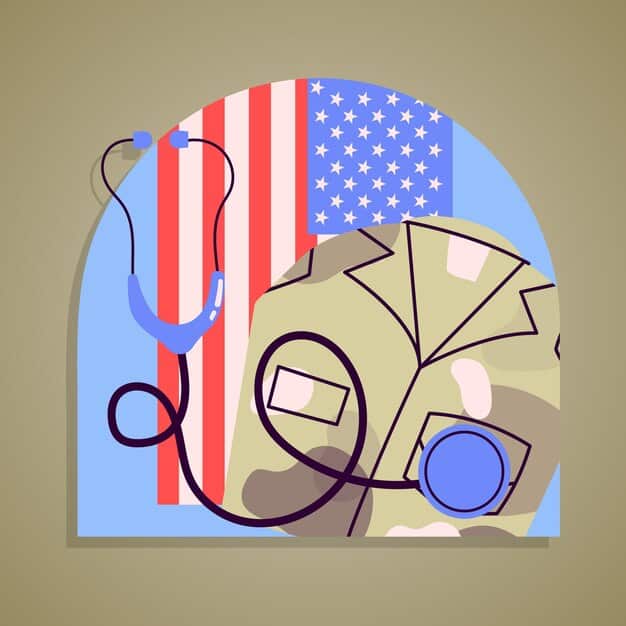US Public Health Crisis: Opioid Epidemic & Health Challenges

The multifaceted US public health crisis encompasses widespread issues from the devastating opioid epidemic to rising chronic diseases, underscoring an urgent need for integrated, equitable, and preventative healthcare strategies to improve national well-being and resilience.
The US Public Health Crisis: Addressing the Opioid Epidemic and Other Health Challenges represents a complex web of interconnected issues demanding urgent attention and comprehensive solutions. From the pervasive grip of opioid addiction tearing through communities to the silent march of chronic diseases and persistent health disparities, the challenges facing the nation’s health infrastructure are formidable. Understanding these multifaceted problems is the first step toward forging effective, equitable, and sustainable pathways to improve the well-being of all Americans. This analysis delves into the core components of this crisis, exploring its origins, impacts, and the innovative strategies being deployed—or urgently needed—to mitigate its devastating effects and build a healthier future.
The Persistent Shadow of the Opioid Epidemic
The opioid epidemic has cast a long and tragic shadow over the United States, transforming from a public health concern into a full-blown national emergency. Its origins are complex, rooted in aggressive pharmaceutical marketing of opioid painkillers, inadequate understanding of addiction potential, and a shift in prescribing practices that inadvertently fueled widespread dependency. This crisis has claimed hundreds of thousands of lives, shattered families, and strained healthcare systems, legal apparatuses, and social services across the nation.
Initially, the focus was primarily on prescription opioids, which were widely prescribed for pain management. As awareness grew and regulations tightened, many individuals who had developed a dependence on these pharmaceuticals shifted to illicit alternatives like heroin and, most dangerously, fentanyl. This synthetic opioid, significantly more potent than heroin, has exacerbated the crisis, driving unprecedented rates of overdose deaths.
The Devastating Impact of Fentanyl
Fentanyl’s emergence has dramatically escalated the lethality of the opioid crisis. Its extreme potency means even a tiny amount can be fatal, making it incredibly dangerous for users, particularly when mixed unknowingly with other drugs. The clandestine nature of its production and distribution means that users often do not know they are consuming fentanyl, leading to accidental overdoses.
- Exponential rise in overdose fatalities across all demographics.
- Increased burden on first responders equipped with naloxone.
- Challenges in interdiction due to small quantities needed for widespread harm.
Efforts to combat the opioid crisis are multifaceted, involving law enforcement initiatives to disrupt drug trafficking, public health campaigns to raise awareness, and expanded access to treatment and harm reduction services. The goal is not only to prevent new addictions but also to provide life-saving support to those already caught in the cycle of opioid dependency.
Responding to the Crisis: A Multi-pronged Approach
Addressing the opioid epidemic requires a highly coordinated, multi-pronged approach that transcends traditional silos of healthcare and law enforcement. One critical aspect is expanding access to evidence-based treatment, particularly medication-assisted treatment (MAT), which combines behavioral therapy with medications like methadone, buprenorphine, and naltrexone. These medications help normalize brain chemistry, block the euphoric effects of opioids, and relieve cravings without producing the “high” associated with illicit drug use.
Prevention is another cornerstone, focusing on responsible opioid prescribing practices among healthcare providers. State prescription drug monitoring programs (PDMPs) have become vital tools, allowing prescribers to review a patient’s prescription history and identify potential “doctor shopping.” Education campaigns also play a significant role, targeting young people, parents, and communities to raise awareness about the dangers of opioid misuse and the safe storage and disposal of prescription medications. Harm reduction strategies, such as the widespread distribution of naloxone—an opioid overdose reversal medication—and the establishment of syringe service programs, are also crucial for saving lives and preventing the spread of diseases like HIV and hepatitis C among people who inject drugs. These strategies acknowledge that while prevention and treatment are paramount, addressing the immediate risks faced by individuals actively using drugs is equally vital. The evolving nature of the epidemic, particularly with the rise of synthetic opioids like fentanyl, continuously challenges these response efforts, demanding constant adaptation and innovation.
These efforts aim to mitigate immediate harm and provide paths to recovery, but the scale of the epidemic means sustained investment and political commitment are essential. The ultimate success will depend on a holistic understanding of addiction as a disease, not a moral failing, coupled with community-level interventions and accessible care.
Chronic Diseases: A Quiet Epidemic
Beyond the immediate and dramatic impact of the opioid crisis, the United States grapples with a quieter, yet equally pervasive, public health challenge: the widespread prevalence of chronic diseases. Conditions such as heart disease, cancer, diabetes, and chronic respiratory diseases represent the leading causes of death and disability in the country. These diseases contribute significantly to the nation’s healthcare costs and diminish the quality of life for millions of Americans. Their growth is often attributed to a combination of lifestyle factors, environmental exposures, and socioeconomic determinants.
Obesity, a rapidly growing epidemic itself, is a major risk factor for several chronic conditions, including type 2 diabetes, heart disease, stroke, and certain types of cancer. Sedentary lifestyles and diets high in processed foods and sugars have contributed to escalating obesity rates across all age groups. Addressing chronic diseases requires a shift from reactive care—treating symptoms after they appear—to proactive prevention and management, focusing on health promotion and early intervention. This involves encouraging physical activity, promoting healthy eating habits, and improving access to preventative screenings and primary care.
Cardiovascular Disease: The Leading Killer
Heart disease remains the foremost cause of death in the US, encompassing a range of conditions that affect the heart. Risk factors are well-understood and include high blood pressure, high cholesterol, smoking, diabetes, and obesity. While significant advancements have been made in treating cardiovascular conditions, the sheer volume of cases continues to pose immense challenges to the healthcare system. Prevention strategies centered on lifestyle modifications and regular medical check-ups are absolutely vital in reducing its burden.
Furthermore, managing these conditions requires continuous patient engagement and adherence to treatment plans, which can often be complex and lifelong. The economic strain placed on individuals, families, and the healthcare system by chronic disease management is staggering, far surpassing the costs associated with infectious diseases. Effective interventions must therefore span various sectors, from public health agencies promoting healthy behaviors to healthcare providers delivering integrated care and policymakers addressing environmental and systemic factors.
Diabetes: A Growing Concern
Diabetes, particularly type 2 diabetes, has seen a dramatic increase in prevalence, often linked to the rising rates of obesity and sedentary lifestyles. This condition can lead to severe complications, including heart disease, kidney failure, blindness, and amputation, if not properly managed. Early detection, consistent monitoring, and lifestyle interventions are critical for preventing or delaying these debilitating outcomes.
- Increased risk of heart attacks and strokes.
- Leading cause of kidney failure and nerve damage.
- Significant contributor to avoidable blindness and lower-limb amputations.
The interconnectedness of chronic diseases means that addressing one risk factor, such as obesity, can have a ripple effect, reducing the risk of several other conditions simultaneously. This holistic view is essential for developing comprehensive public health strategies that are both effective and sustainable in the long term. Public health campaigns aimed at increasing physical activity and improving dietary choices are fundamental in combating these widespread health issues. Moreover, healthcare systems are increasingly focused on integrated care models that allow for a more cohesive management of multiple chronic conditions, recognizing the complex interplay between them. This approach also emphasizes patient education and empowerment, enabling individuals to take a more active role in their own health management through self-monitoring, adherence to medication, and embracing healthier lifestyles. The long-term success of these efforts hinges on consistent funding, innovative research, and a societal commitment to health equity.

Health Disparities Across American Society
A critical, often overlooked, dimension of the US public health crisis is the existence of profound health disparities. These are preventable differences in the burden of disease, injury, violence, or opportunities to achieve optimal health that are experienced by socially disadvantaged populations. Factors such as race, ethnicity, socioeconomic status, geographic location, gender, sexual orientation, disability status, and other characteristics are deeply intertwined with health outcomes, leading to significant inequities in access to care, quality of treatment, and overall health status.
Minority groups and low-income communities disproportionately bear the brunt of chronic diseases, suffer higher rates of infant mortality, and have less access to crucial preventative services. These disparities are not merely a reflection of individual choices; rather, they are systemic, perpetuated by historical and ongoing social, economic, and environmental inequities. Addressing health disparities requires a thorough understanding of the social determinants of health—the conditions in the environments where people are born, live, learn, work, play, worship, and age that affect a wide range of health, functioning, and quality-of-life outcomes and risks.
Socioeconomic Status and Health Outcomes
Studies consistently demonstrate a strong correlation between lower socioeconomic status and poorer health outcomes. Individuals with limited income and education often face barriers to accessing nutritious food, safe housing, quality education, and stable employment—all of which are fundamental to good health. Moreover, they are less likely to have comprehensive health insurance, leading to delayed or forgone medical care.
- Lower life expectancy.
- Higher prevalence of chronic conditions.
- Increased mental health challenges due to financial stress.
These challenges are compounded by the fact that many low-income communities are located in areas with limited access to healthy food options (“food deserts”) and insufficient recreational facilities, further hindering the adoption of healthy lifestyles. The cycle of poverty and poor health is difficult to break without targeted interventions that address the root causes of these socioeconomic disadvantages. Ensuring equitable access to resources and opportunities is paramount for reducing health disparities and fostering a healthier, more just society. This includes investments in affordable housing, access to quality education, and job training programs that lead to livable wages. Furthermore, community-based initiatives are vital for building trust and providing culturally competent care that respects the diverse backgrounds of different population groups. By understanding and addressing the structural barriers that create and perpetuate health inequities, it becomes possible to design more effective and inclusive public health strategies that genuinely reach those most in need. Ultimately, reducing health disparities is not just a matter of fairness but a crucial investment in the overall health and productivity of the nation.
Mental Health: A National Underserviced Need
The recognition of mental health as an integral component of overall public health has grown significantly in recent years, yet it remains a profoundly underserviced need in the United States. Mental health conditions, including anxiety disorders, depression, post-traumatic stress disorder, and substance use disorders (often intertwined with the opioid crisis), affect millions of Americans each year. The COVID-19 pandemic further exacerbated these issues, highlighting the fragility of existing mental health support systems and the urgent need for expanded access to care.
Stigma surrounding mental illness often prevents individuals from seeking help, and when they do, they frequently encounter barriers such as a shortage of qualified professionals, prohibitive costs, and inadequate insurance coverage. Timely and appropriate mental healthcare is crucial, not only for improving individual well-being but also for reducing the societal burden of mental illness, which manifests as lost productivity, increased healthcare costs, and elevated risks of homelessness and incarceration. Integrating mental health services into primary care settings is a promising approach for increasing accessibility and reducing stigma, providing a more holistic approach to patient care.
Adolescent Mental Health Challenges
The mental health of adolescents and young adults is a particularly pressing concern. Suicide is now among the leading causes of death for this age group, and rates of anxiety, depression, and other mental health conditions have been steadily rising. Factors such as academic pressure, social media influence, family dysfunction, and societal upheaval contribute to these concerning trends. Early intervention and prevention programs in schools and communities are vital for addressing these challenges.
Providing safe spaces for young people to express themselves, offering mental health literacy education, and ensuring easy access to counseling services can make a significant difference. Furthermore, addressing the underlying social determinants that impact mental well-being, such as poverty, discrimination, and inadequate educational opportunities, is also crucial. Mental health is a complex field that requires a careful balance of medical, psychological, and social interventions. Expanding the mental health workforce, particularly in underserved rural and urban areas, is paramount, as is ensuring that these professionals are adequately trained to serve diverse populations with culturally sensitive care. Telehealth has emerged as an invaluable tool for bridging geographical gaps, particularly during and after the pandemic, making it easier for individuals to access therapy and psychiatric consultations from their homes. Policy efforts like mental health parity laws aim to ensure that insurance coverage for mental health and substance use disorders is comparable to that for physical health conditions, thereby reducing financial barriers to care. The collective goal is to foster a society where mental health is openly discussed, stigma is reduced, and everyone has access to the support they need to thrive. Addressing these multifaceted issues requires sustained investment and a collaborative effort across government, healthcare, education, and community organizations.
Preparedness for Future Health Crises
The COVID-19 pandemic served as a stark, undeniable wake-up call regarding the state of public health preparedness in the United States. While the immediate crisis was unprecedented in modern times, it exposed critical vulnerabilities in the nation’s ability to respond effectively to large-scale health emergencies. From insufficient supplies of personal protective equipment (PPE) and diagnostic tests to communication failures and fragmented public health systems, the pandemic highlighted numerous areas needing urgent reform and investment. Ensuring readiness for future infectious disease outbreaks, bioterrorism threats, or even natural disasters with significant health impacts requires a proactive and comprehensive strategy.
A robust public health infrastructure is the backbone of effective crisis response. This includes adequately funded public health agencies at federal, state, and local levels, equipped with skilled personnel, advanced surveillance systems, and rapid response capabilities. Investment in public health goes beyond reacting to emergencies; it involves continuous population health monitoring, vaccine development and distribution readiness, and community engagement to build trust and resilience. Furthermore, the capacity for rapid research and development of countermeasures, coupled with efficient regulatory pathways, is essential to accelerate the availability of life-saving therapeutics and vaccines.
Strengthening the Public Health Infrastructure
A critical lesson from recent crises is the need for a more resilient and integrated public health infrastructure. This goes beyond just emergency response; it encompasses foundational capabilities that support everyday public health functions, such as disease surveillance, laboratory capacity, and effective communication channels. Underfunding has left many state and local health departments stretched thin and ill-equipped to handle cascading crises.
- Increased and stable funding for state and local health departments.
- Investment in modern data systems for disease surveillance.
- Expansion of the public health workforce and training programs.
Building these capacities takes time and sustained political will, but the cost of inaction, as demonstrated by past pandemics, far outweighs the investment. Effective crisis response is also contingent on clear, consistent communication from trusted sources to combat misinformation and ensure public cooperation. This involves transparent reporting, public education campaigns, and rapid dissemination of accurate health guidance. The coordination between federal, state, and local governments, coupled with partnerships with the private sector and academic institutions, is crucial for a unified and agile response. Finally, addressing health equity within preparedness plans is vital; marginalized communities are often disproportionately affected by crises and require specific attention to ensure equitable access to resources and information. Lessons learned from past events must translate into actionable strategies that rebuild trust, enhance resilience, and ultimately better protect the health of all Americans. This involves not only technological upgrades but also strengthening human capital and fostering a culture of preparedness throughout society. Establishing clear chains of command and responsibility, running regular drills and simulations, and conducting post-crisis evaluations are all part of a continuous improvement cycle that reinforces national security and public health resilience. Without these systemic improvements, the U.S. risks facing future health threats with the same vulnerabilities exposed during recent epidemics, perpetuating preventable illness and loss of life.
Innovation and the Future of US Healthcare
As the United States grapples with its complex public health crisis, innovation emerges as a beacon of hope and a vital pathway forward. The future of US healthcare hinges on embracing new technologies, leveraging data science, and reimagining care delivery models to address persistent challenges proactively. This includes advancements in precision medicine, the expansion of telehealth, the integration of artificial intelligence (AI) in diagnostics and treatment, and the development of novel public health interventions that are evidence-based and scalable. These innovations hold the potential to enhance efficiency, improve outcomes, and expand access to care, particularly for underserved populations.
Precision medicine, for instance, tailors medical treatment to the individual characteristics of each patient, including their genetic makeup, environment, and lifestyle. This approach holds immense promise for more effective treatments for cancer, rare diseases, and even mental health conditions. Telehealth, which surged during the pandemic, has proven its utility in providing remote consultations, chronic disease management, and mental health support, reducing geographical barriers and improving convenience for patients. Similarly, AI and machine learning are revolutionizing diagnostics, drug discovery, and predictive analytics, allowing for earlier detection of diseases and more personalized treatment plans. However, integrating these innovations effectively requires careful consideration of ethical implications, data privacy, and ensuring equitable access to these cutting-edge technologies across all socioeconomic groups.
Telehealth: Bridging Gaps in Care
The rapid adoption of telehealth during the pandemic demonstrated its transformative potential. Virtual consultations, remote monitoring, and digital health platforms have proven instrumental in delivering care when in-person visits are challenging or unnecessary. Telehealth can significantly improve access to specialists, mental health providers, and primary care for individuals in rural areas or those with mobility issues, effectively reducing geographical disparities in healthcare access.
- Increased access to mental health services.
- Convenience for routine check-ups and follow-ups.
- Reduced travel time and costs for patients.
However, challenges remain, including ensuring equitable access to broadband internet, addressing licensing complexities across state lines, and securing appropriate reimbursement policies. Overcoming these hurdles is crucial for telehealth to reach its full potential as a permanent feature of a modernized healthcare system. The ethical implications of AI in healthcare, particularly concerning potential biases in algorithms and the need for human oversight, are also critical considerations. Moreover, robust cybersecurity measures are essential to protect sensitive patient data in an increasingly digital healthcare landscape. The intersection of technology and public health also offers opportunities for novel ways to track and predict disease outbreaks, personalize preventative strategies, and empower individuals with more control over their own health data. The future health of the nation will largely depend on its ability to judiciously embrace these technological advancements while simultaneously ensuring that they serve to reduce, rather than exacerbate, existing health disparities. This dual focus on innovation and equity is paramount for building a resilient, effective, and just healthcare system for all.

Policy Pathways and Collaborative Solutions
Addressing the multifaceted public health crisis in the United States demands not only innovative approaches but also robust policy pathways and strong collaborative solutions. The systemic nature of these challenges—from the opioid epidemic to chronic diseases and health disparities—necessitates a coordinated response involving federal, state, and local governments, healthcare providers, communities, educational institutions, and the private sector. Effective policy is the lever that can drive systemic change, ensuring resources are allocated efficiently, regulations support public health goals, and equitable access to care is prioritized for all populations.
Policy interventions can range from
legislative actions that increase funding for public health programs and research, to regulatory reforms that promote responsible medical practices and ensure patient safety. For instance, policies aimed at expanding Medicaid and other health insurance programs play a critical role in increasing access to mental health and substance use disorder treatment. Similarly, public health policies that promote nutrition education, discourage smoking, and encourage physical activity can significantly impact the prevalence of chronic diseases. The political will to enact and sustain these policies is paramount to their long-term success. Furthermore, cross-sector collaboration is essential; complex health issues rarely fit neatly into one department or agency and require shared understanding and commitment to common goals.
Integrated Care Models
One promising policy pathway involves promoting integrated care models. This approach seeks to connect physical health, mental health, and substance use disorder services, recognizing that these aspects of well-being are inextricably linked. By breaking down traditional silos between specialists and primary care, integrated models can provide more holistic, patient-centered care, improve continuity, and enhance overall health outcomes. This is particularly vital for managing complex chronic conditions and addressing co-occurring mental health and substance use disorders, which are common among individuals affected by the opioid crisis.
Policies supporting payment reform, workforce development in integrated settings, and the adoption of shared electronic health records are key to facilitating this paradigm shift. These policies must also be designed with equity in mind, ensuring that new models of care reach underserved communities that have historically faced barriers to accessing comprehensive health services. The success of these comprehensive frameworks depends on sustained commitment from all stakeholders, moving beyond reactive responses to proactive and preventive strategies. This includes fostering public-private partnerships that leverage resources and expertise from diverse sectors. Engaging communities directly in the design and implementation of health policies also ensures that interventions are culturally sensitive and address the specific needs and priorities of the populations they serve. Finally, continuous evaluation of policies and programs is necessary to identify what works, adapt to evolving challenges, and ensure accountability. Only through such a concerted and adaptive effort can the US hope to effectively navigate its public health crises and build a more resilient and equitable health future for all its citizens.
Conclusion: Charting a Healthier Course
The US public health crisis, characterized by the opioid epidemic, the pervasive burden of chronic diseases, profound health disparities, and historical underinvestment in mental health and preparedness, presents a formidable challenge. Yet, it also offers a compelling opportunity for fundamental change. Addressing these interconnected issues demands an integrated, data-driven, and equitable approach, transcending traditional boundaries of healthcare to embrace broad policy changes and foster true community collaboration. By prioritizing prevention, expanding access to comprehensive care, strengthening public health infrastructure, and leveraging technological innovation, the nation can chart a healthier course, ensuring that well-being is not a privilege but an attainable right for every American. The path forward requires sustained political will, continuous investment, and a collective commitment to building a more resilient and just health system for generations to come.
| Key Point | Brief Description |
|---|---|
| 💊 Opioid Epidemic | Driven by fentanyl, requires multi-pronged response: treatment, prevention, harm reduction. |
| 📈 Chronic Diseases | Leading causes of death (heart disease, diabetes); demand prevention and integrated care. |
| 🤝 Health Disparities | Systemic inequities impacting vulnerable populations due to socioeconomic factors. |
| 🧠 Mental Health | Underserviced need, exacerbated by pandemic; requires integration and reduced stigma. |
Frequently Asked Questions About the US Public Health Crisis
▼
The current opioid crisis is heavily driven by the illicit distribution and consumption of synthetic opioids, particularly fentanyl. Its extreme potency and often unknown presence in other illicit drugs contribute to high rates of accidental overdose deaths, making it a critical public health and law enforcement challenge.
▼
Chronic diseases like heart disease, cancer, and diabetes are leading causes of death and disability, placing an immense burden on the US healthcare system. They account for a significant portion of healthcare costs and require long-term management, often complicated by lifestyle factors and socioeconomic determinants.
▼
Health disparities refer to preventable differences in health outcomes among various population groups, often linked to socioeconomic status, race, or geographic location. They are a crisis because they reflect systemic inequities that lead to unequal access to care and poorer health for disadvantaged communities, undermining overall national health.
▼
Technology offers significant potential to address the public health crisis through innovations like telehealth, which expands access to care, and the use of AI for improved diagnostics and personalized medicine. Leveraging data science can also enhance disease surveillance and public health interventions, making them more efficient and targeted.
▼
Policy plays a crucial role by allocating resources, shaping healthcare regulations, and promoting equitable access to care. Effective policies can drive systemic changes, such as expanding insurance coverage, funding prevention programs, and supporting integrated care models to create a more resilient and accessible public health system.
Conclusion
The US public health crisis, characterized by the opioid epidemic, the pervasive burden of chronic diseases, profound health disparities, and historical underinvestment in mental health and preparedness, presents a formidable challenge. Yet, it also offers a compelling opportunity for fundamental change. Addressing these interconnected issues demands an integrated, data-driven, and equitable approach, transcending traditional boundaries of healthcare to embrace broad policy changes and foster true community collaboration. By prioritizing prevention, expanding access to comprehensive care, strengthening public health infrastructure, and leveraging technological innovation, the nation can chart a healthier course, ensuring that well-being is not a privilege but an attainable right for every American. The path forward requires sustained political will, continuous investment, and a collective commitment to building a more resilient and just health system for generations to come.





